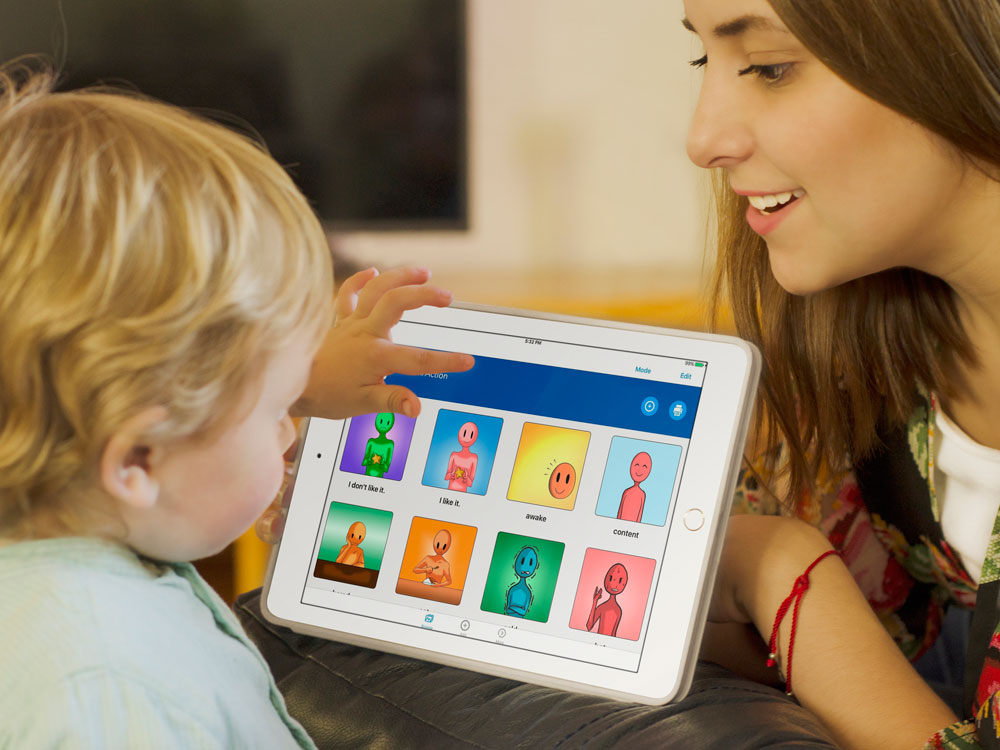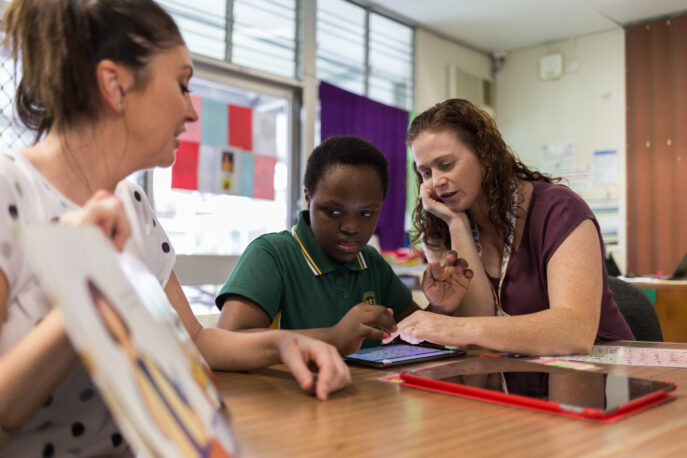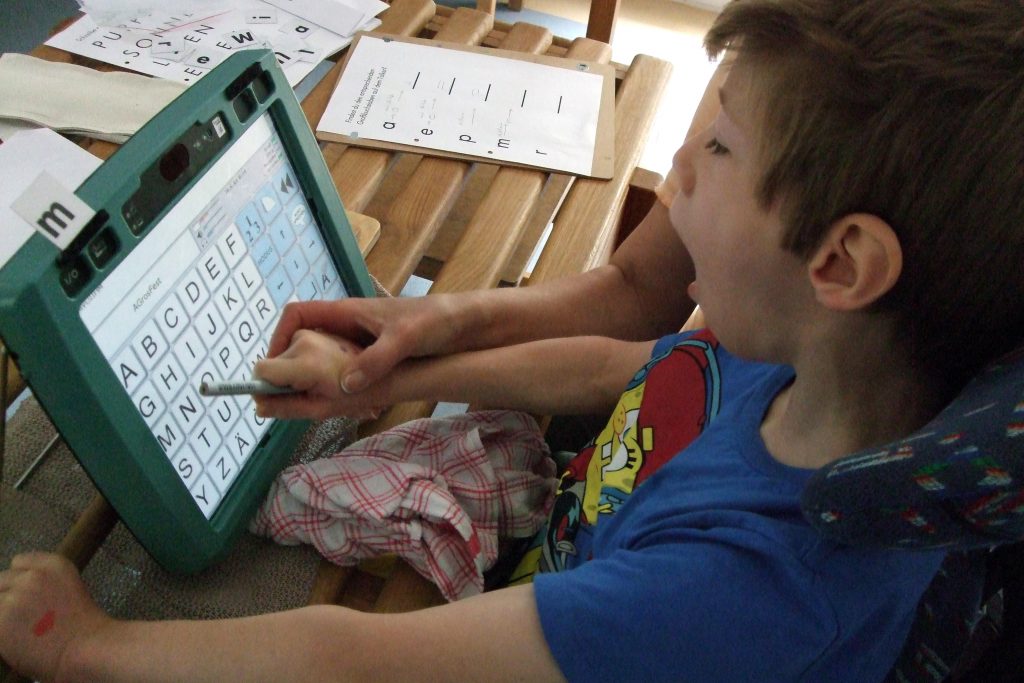An Effective Strategy For Using an AAC Device: Modeling
If your child uses an augmentative and alternative communication (AAC) device, chances are you have heard about the importance of modeling. Modeling, aided language stimulation (ALS), natural aided language, aided language modeling and partner augmented input (PAI) all refer to the same thing: providing the AAC user with language models using their communication device.

Think of it this way: Handing your child a communication device and expecting them to use it proficiently is like buying a grand piano for your child and then asking them to play Mozart. AAC users need exposure to their language systems, just like young verbal communicators need to hear a word many times before using it.
Modeling seems like a no-brainer and there is plentiful research supporting its use, but what does everyday aided language stimulation actually look like? Below are some answers to common questions regarding AAC usage and modeling.
1) What Does Modeling Look Like?
It looks a lot like selecting words on the AAC user’s device while simultaneously talking. For example, you might say, “let’s read a new book” while selecting “read” or “read book” on the device. Focus on key words, even if it is not grammatically correct.
2) How Long Should Models Be?
The goal is for models to be 1-2 words above the average length of the AAC user’s spontaneous utterances. If the AAC user consistently uses the system to communicate single words, aim to model 2-3 word combinations on the device. As the AAC user becomes more proficient, your models will become more sophisticated (think: pronouns, adjectives, grammatical markers). You do not need to model every word that you say! To start, keep the models short and simple. Simple = more uses and more uses = success!

3) How Often Should I Be Modeling?
Ideally, it recommended to partner augmented input in 70-80% of daily activities. Is this realistic? Probably not, especially not in the beginning stages of AAC use. Remember though, some modeling is better than none at all! Start by modeling during 1-2 familiar daily routines, like eating breakfast, getting dressed or walking to the park.
4) Should I Have The AAC User Imitate My Models?
No. The point of modeling is to expose the AAC user to as much input as possible without any expectations placed. They do not need to imitate your models,
although it would be great if they did! It is important to pause after your models to provide an opportunity for the child to communicate.
5) What If I Make Mistakes When I Am Modeling Or I Can’t Find The Word I’m Looking For?
Mistakes = learning opportunities. If you select the wrong word, go back and try again. Communication breakdowns happen all the time. Modeling use of language repair strategies is just as valuable as selecting the intended word in the first place.
Searching for a word is another learning opportunity. Talk out loud, explain your thinking and have your child watch as your navigate through pages. For example, you might say, “I’m looking for penguin. Let’s go to groups, animals, zoo animals. Nope, not under zoo animals, let’s try birds. There it is! Penguin!”

Final Thoughts
Remember, aided language stimulation does not need to be perfect in order to be effective! It will also show your child that they do not need to be errorless when using their own device! Do you have more questions about modeling with AAC? Are you looking for additional AAC training and support?
Contact the pediatric specialists to have an assessment with one of our speech and language pathologists at Chicago Pediatric Therapy & Wellness Center at 773-687-9241 today! If you think that augmentative communication may benefit your child, we can help with an assessment to determine which device may be right for them!

